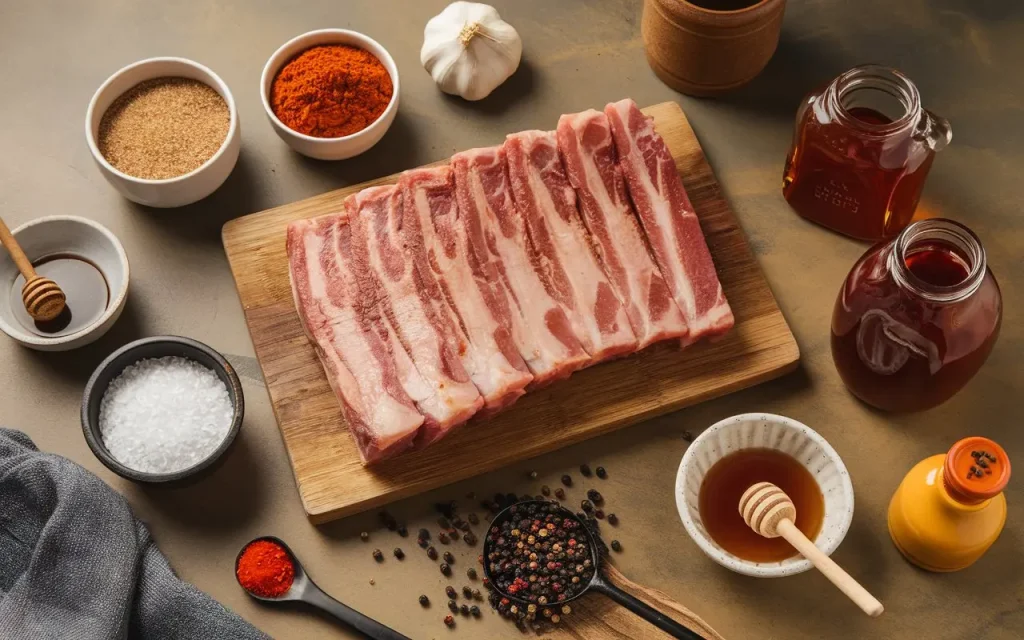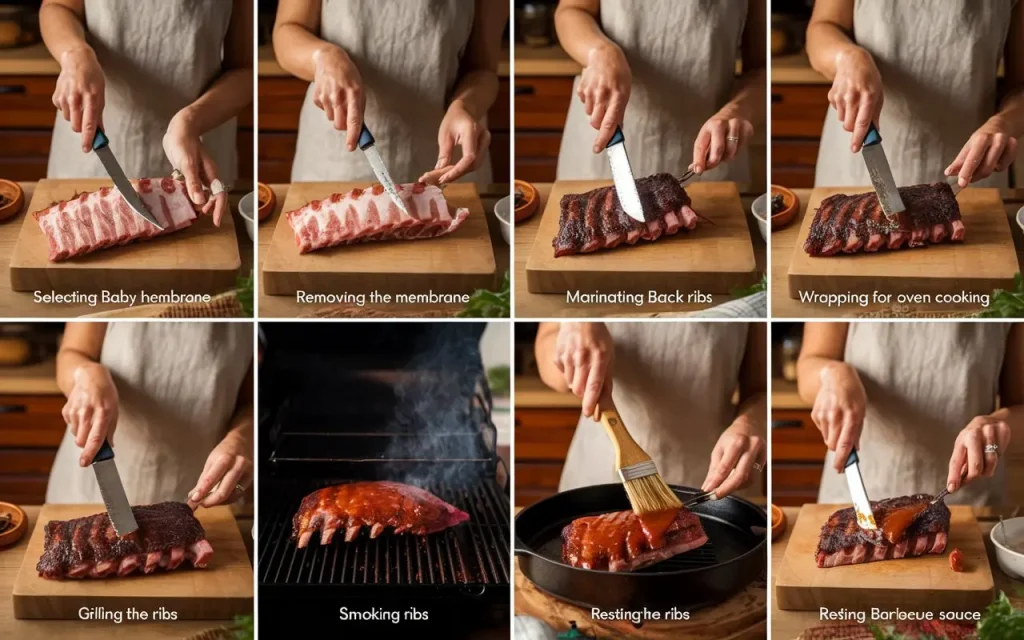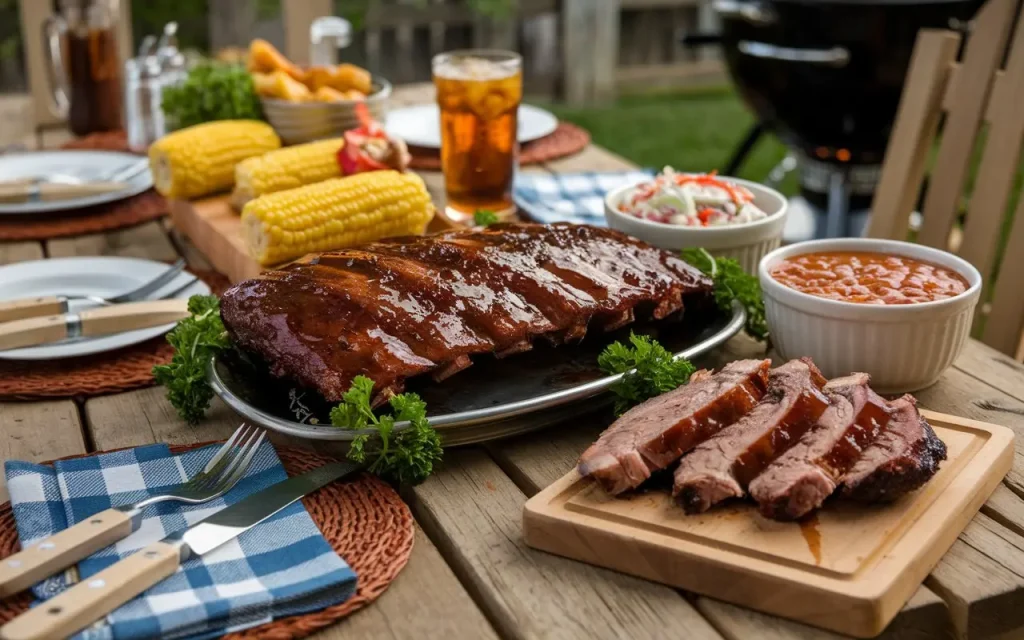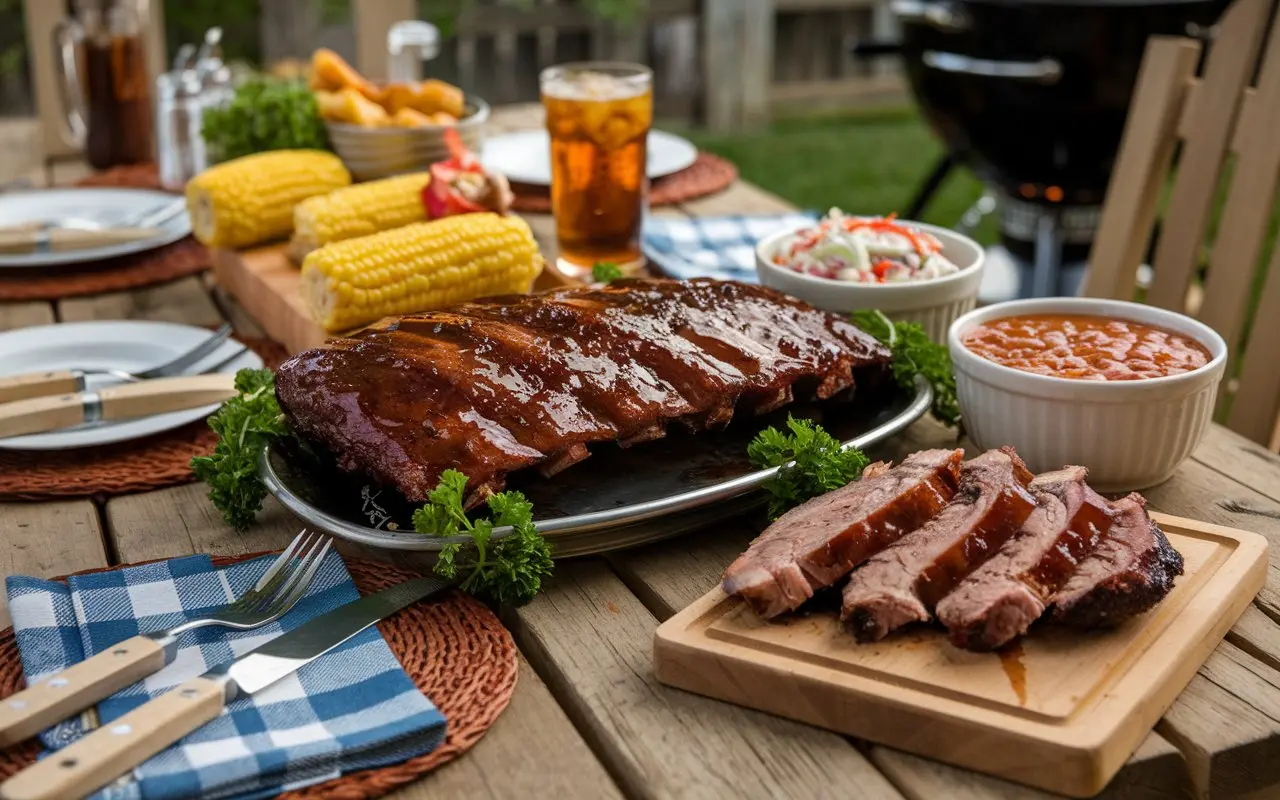Mastering the Perfect Barbecue Baby Back Ribs: A Complete Guide
There’s something undeniably magical about barbecue. The smell of the smoke, the deep, caramelized crust, and the tender, juicy bite make barbecue baby back ribs a universal crowd-pleaser. Whether you’re a barbecue novice or an experienced pitmaster, this article will guide you through the process of making ribs so delicious that they’ll become a regular feature at your backyard cookouts. We’ll cover everything—from selecting the best ribs to preparing, cooking, and perfecting that beautiful glaze. Let’s dig in and get started on this delicious adventure!
1. Choosing the Perfect Baby Back Ribs
The secret to making perfect barbecue baby back ribs begins even before you start cooking. Picking the right rack of ribs lays the foundation for success. You want to choose a rack that’s not only fresh but also has the perfect amount of marbling and meatiness.
1.1 What are Baby Back Ribs?
Baby back ribs come from the upper section of the rib cage, closer to the backbone, where they are leaner compared to spare ribs. They are smaller, more curved, and more tender, which makes them an ideal choice for quick, delicious barbecue cooking. They usually weigh between 1.5 to 2 pounds, and one rack generally feeds two to three people, depending on the side dishes served.
1.2 Selecting the Right Ribs
When you head to your butcher or grocery store, keep these points in mind for picking the perfect rack:
- Marbling: Marbling refers to the thin streaks of fat throughout the meat. Look for ribs with visible marbling, as the fat will melt during the cooking process, keeping the ribs moist and flavorful.
- Avoid Shiners: “Shiners” are ribs where the meat has been trimmed too close to the bone, resulting in the bones being exposed (like a shiny surface). Avoid shiners, as they tend to be drier and less flavorful.
- Freshness: Always opt for the freshest meat available. Fresh ribs should be pinkish-red with no discoloration or odd smell.
2. Preparing the Ribs: Mastering the Art of Seasoning
The preparation stage is crucial for infusing flavor into your baby back ribs. Proper preparation includes removing the tough membrane from the ribs, applying a flavorful dry rub, and possibly even marinating the meat for extra juiciness.
2.1 Removing the Membrane
The membrane is the tough, chewy silver skin that covers the bone side of the ribs. If you want to make ribs that fall off the bone and melt in your mouth, you’ll need to remove this membrane before cooking.
- Step 1: Place the ribs bone-side up.
- Step 2: Insert a butter knife underneath the membrane near one end of the ribs.
- Step 3: Lift and loosen the membrane until you can grab it with a paper towel. Gently pull it away from the ribs.
By removing this layer, you allow the flavors of the seasoning and smoke to penetrate the meat more effectively, resulting in tender ribs that absorb the spices and smoke.
2.2 Seasoning the Ribs: Dry Rub Ingredients
The next step is to season the ribs with a dry rub that will infuse layers of flavor during cooking. A dry rub consists of a combination of spices, sugar, and salt, which helps to create a flavorful crust on the ribs during cooking.
Dry Rub Recipe
- 1/4 cup Brown Sugar: Adds sweetness and helps create a beautiful caramelized crust.
- 2 tbsp Paprika: Brings a smoky depth.
- 1 tbsp Garlic Powder: Essential for that rich, garlicky base.
- 1 tbsp Onion Powder: Complements the garlic and adds umami.
- 1 tbsp Black Pepper: Balances the sweetness of the sugar.
- 1 tbsp Kosher Salt: Essential for enhancing all flavors.
- 1/2 tsp Cayenne Pepper (optional): For a bit of heat, if desired.

After mixing all the ingredients, coat the ribs generously with the dry rub, making sure to press the spices into the meat to create a uniform layer. Let the ribs sit for at least 30 minutes or, for even better results, refrigerate them overnight. This allows the flavors to fully penetrate the meat.
2.3 Marinade or Brine for Extra Moisture
To take your barbecue baby back ribs to the next level, consider brining the ribs overnight. A simple brine solution made with 1 quart of water, 1/4 cup salt, and 1/4 cup sugar can add tremendous moisture to the ribs, preventing them from drying out during cooking. Adding apple juice or cider vinegar to the brine can introduce an extra layer of tangy flavor, which pairs beautifully with the rich meatiness of the ribs.
Alternatively, you could marinate the ribs in a flavorful liquid mixture for several hours before cooking. Ingredients like soy sauce, Worcestershire sauce, garlic, and honey can create a delicious and aromatic marinade that elevates the flavor.
3. Cooking Techniques: Grill, Oven, or Smoker?
There are multiple ways to cook baby back ribs—each method offers distinct advantages. Whether you prefer the deep smokiness of a smoker, the convenience of the oven, or the classic touch of a grill, the method you choose will influence the final flavor and texture of your ribs.
3.1 Cooking Baby Back Ribs in the Oven
The oven is a great method if you don’t have access to an outdoor grill. It allows you to control the temperature precisely, ensuring perfectly cooked, tender ribs every time.
Step-by-Step Instructions:
- Preheat the Oven: Set your oven to 275°F.
- Prepare a Baking Tray: Place the seasoned ribs on a foil-lined baking tray. Cover them tightly with another layer of foil to trap in the steam, which helps to tenderize the meat.
- Bake Low and Slow: Bake the ribs for 2.5 to 3 hours. This slow cooking process is crucial for tender ribs.
- Add Barbecue Sauce: After baking, uncover the ribs and slather them with barbecue sauce. Return them to the oven at a higher temperature (400°F) or under the broiler for about 10 minutes to caramelize the sauce.

This oven method yields tender ribs with a flavorful crust, perfect for pairing with sides like the Hamburger Green Beans Tomato and Potato Casserole for a hearty meal.
3.2 Grilling Baby Back Ribs for a Charred Finish
Grilling the ribs imparts that classic smoky barbecue flavor. While it requires some supervision, the grill can deliver a rich, charred exterior with a juicy interior.
Grill Instructions:
- Set Up for Indirect Heat: Arrange the coals on one side of the grill, creating a hot and cool zone. This indirect heat method prevents the ribs from burning while cooking evenly.
- Temperature Maintenance: Aim for a grill temperature of 250°F-300°F.
- Grill the Ribs: Place the ribs on the cooler side of the grill. Close the lid and cook for 2-3 hours, turning every 30 minutes.
- Saucing: In the last 30 minutes of cooking, begin basting with barbecue sauce. You can try a tangy homemade barbecue sauce, or consider using the Tequila Lime Shrimp Recipe sauce for a zesty twist.
3.3 Smoking Barbecue Baby Back Ribs
Smoking is the gold standard for barbecued baby back ribs. Smoking the ribs at low temperatures over several hours allows the flavors from the wood to deeply penetrate the meat, producing a smoky, flavorful result.
Instructions for Smoking Ribs:
- Choose Your Wood: Select wood chips like hickory, apple, or cherry. Soak the wood chips in water for at least 30 minutes to prevent them from burning too quickly.
- Heat the Smoker: Preheat the smoker to 225°F.
- Smoke the Ribs: Place the ribs bone-side down and smoke them for 5-6 hours. Check periodically to ensure the smoker temperature stays consistent.
- Wrapping in Foil (Optional): Halfway through smoking, wrap the ribs in foil with a bit of apple juice or butter. This method, called the Texas crutch, helps tenderize the meat further.
Smoking ribs requires patience, but the result is well worth the wait. Pair your smoked ribs with a Potatoes Mushrooms Cream Sauce to add a creamy
and earthy contrast to the smoky flavors.
4. Crafting the Perfect Barbecue Sauce
No set of ribs is complete without a generous helping of barbecue sauce. Whether you like your sauce spicy, tangy, sweet, or smoky, crafting your own sauce allows you to create something perfectly suited to your tastes.
4.1 Homemade Barbecue Sauce Recipe
For these baby back ribs, we suggest a balanced barbecue sauce that’s tangy, smoky, and just the right amount of sweet.
Ingredients for Barbecue Sauce:
- 1 cup Ketchup: The base of the sauce, providing sweetness and thickness.
- 1/2 cup Apple Cider Vinegar: For that essential tangy flavor.
- 1/4 cup Brown Sugar: To add sweetness and balance the acidity.
- 2 tbsp Worcestershire Sauce: Adds a savory, umami depth.
- 1 tbsp Mustard: For a touch of heat and acidity.
- 2 tbsp Honey: Helps create a sticky, glossy glaze.
- 1 tsp Garlic Powder and 1 tsp Onion Powder: Enhance the complexity of flavors.
Instructions:
- Combine all ingredients in a medium saucepan over medium heat.
- Stir until the sugar dissolves, and then simmer for 15-20 minutes until thickened.
- Set aside to cool, and apply it to the ribs during the last phase of cooking to achieve that glossy, caramelized finish.
This sauce pairs beautifully with the ribs and works well as a dipping sauce for other dishes like The Ultimate Croissant Sandwich Guide, perfect for a leftover rib sandwich twist.
5. Resting, Slicing, and Serving the Ribs
After cooking your ribs to tender, juicy perfection, the final step is resting and slicing them properly.
5.1 Rest the Ribs
Allow the ribs to rest for 10-15 minutes after cooking. Resting is critical as it allows the juices to redistribute throughout the meat, resulting in a juicier and more flavorful bite.
5.2 Slicing the Ribs
Using a sharp knife, cut between each bone, ensuring each rib has a nice amount of meat on it. Serve the ribs on a platter, perhaps garnished with freshly chopped parsley for an added touch of color.
5.3 Suggested Sides and Pairings
Barbecue ribs are delicious on their own but become extraordinary when paired with complementary sides. Consider these pairings:
- Rockfish Recipes for a surf-and-turf experience.
- Seasoned Hand – Cooking Like an Expert to elevate your culinary game alongside your ribs.
6. Advanced Techniques: Elevate Your Rib Game
Want to take your barbecue baby back ribs to the next level? Here are some advanced techniques that will have everyone asking for your secret recipe.
6.1 The Texas Crutch
As mentioned earlier, wrapping the ribs in foil halfway through cooking with a little apple juice or butter can significantly increase moisture and tenderness. This method, known as the Texas crutch, helps keep the ribs juicy and reduces the cooking time slightly.
6.2 Adding a Smoke Ring
A smoke ring is a pink layer that forms just below the surface of the meat, indicating well-smoked barbecue. To achieve a pronounced smoke ring, make sure to cook at low temperatures for the first couple of hours and add a bit of moisture like water pans in the smoker to enhance smoke adhesion.
6.3 Using a Mop Sauce
A mop sauce is a thin sauce applied to meat while it smokes to keep it moist. A vinegar-based mop sauce works well for baby back ribs:
- 1 cup Apple Cider Vinegar
- 1/2 cup Water
- 2 tbsp Olive Oil
- 1 tbsp Paprika
Brush this mixture on the ribs every 30-45 minutes to add layers of flavor and keep the ribs moist.
7. Troubleshooting and Common Mistakes
Cooking ribs can be challenging, but understanding common mistakes and how to fix them ensures your ribs are perfect every time.
7.1 Tough Ribs?
The most common reason for tough ribs is that they haven’t been cooked long enough. Baby back ribs need low and slow cooking to break down connective tissue and become tender. If your ribs are tough, wrap them in foil and cook for another hour at 250°F.
7.2 Dry Ribs?
To prevent dry ribs, avoid overcooking and ensure you maintain a consistent cooking temperature. Wrapping the ribs in foil during the cook and basting with sauce helps to keep them moist.
7.3 Burnt Sauce?
Sauces that contain a lot of sugar can burn easily. To avoid burnt barbecue sauce, apply it in the last 30 minutes of cooking. This ensures that the sugars in the sauce caramelize without burning.
8. Conclusion: Embrace the Art of Barbecue
Mastering barbecue baby back ribs is a journey that involves patience, precision, and passion. From selecting the right cut of meat to seasoning it with just the right mix of spices, and cooking it to juicy perfection, every step is essential. By following the steps and tips in this guide, you’ll be able to consistently produce ribs that are tender, flavorful, and a hit at any gathering.

Serve your ribs with complementary sides, experiment with new flavors, and never stop improving your skills. Whether you choose to bake, grill, or smoke, the end result will always bring smiles to those around the table. Embrace the smoky, sweet, and sticky art of barbecuing baby back ribs, and enjoy the delicious rewards.
Suggested Internal Links
- For more tips on mastering your culinary skills, read Seasoned Hand: Mastering Culinary Skills and Recipes for Cooking Like an Expert.
- Add a bit of twist to your barbecue pairing with Sweet Potato Ukoy with Palabok, which offers a delightful contrast to the richness of ribs.
- Looking for something refreshing to complement the rich flavors? Try Malibu Bay Breeze Cocktail for the perfect summer beverage pairing.

